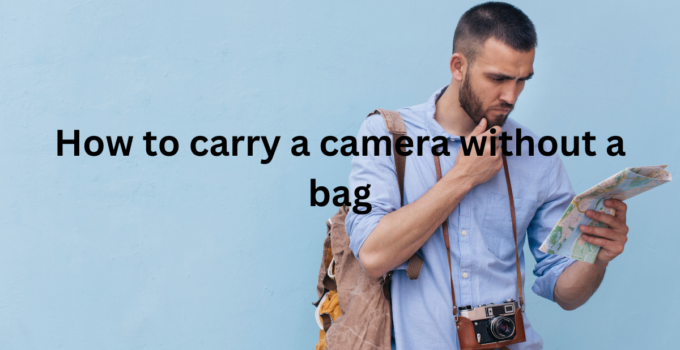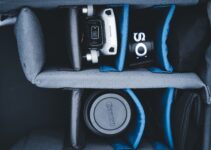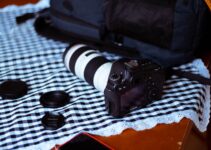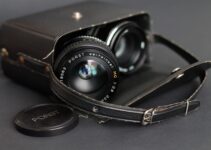How to carry a camera without a bag? Curious?
Are you a photographer, vlogger, or traveler looking for an easier way to transport your precious camera? If so, it can often be difficult to find the right bag to store and protect your equipment.
But what if there was another option that could make carrying cameras around much more convenient? In this blog post, we’ll discuss how you can carry a camera without having to use a cumbersome traditional-style bag.
We’ll look at some clever and convenient alternatives perfect for everyday photography.
These options provide just as much protection against dust and scratches as a standard carrying case! Read on for tips about traveling light with your critical gear!
Do You Need a Camera Bag?
If you’re an aspiring photographer or videographer, it can seem like investing in a camera bag is a daunting task.
After all, you need something that’s rugged enough to withstand the rigors of your job but also fashionable enough to reflect your style and brand.
Fortunately, there is a variety of bags for all kinds of photography projects. Whether you want something stylish yet practical or a bag that can hold multiple cameras and lenses at once, there’s something available for everyone.
A good camera bag not only protects from elements like moisture and impact but it will also make sure all your gear is organized and within easy reach when you need it most.
When deciding on the right bag for your needs, consider ergonomic features such as adjustable straps, starting points for memory cards and batteries, and plenty of pockets for carrying spare batteries and accessories.
In the end, it would be your choice whether you prefer a camera bag or not, but if not, here are a few ways you can carry your camera without a camera bag.
So, take a look and see yourself how you carry a camera without a camera bag.
Camera Straps: The Standard Option
What can you use instead of a camera bag? Carrying a camera without a bag is possible using camera straps.
Many point-and-shoot models have integrated straps as well as easily attachable alternatives, giving you the freedom to rest your camera on your shoulder or neck securely.

There are a variety of styles, such as soft fabric, adjustable nylon webbing, and leather options, whatever fits the situation best.
Each strap style will provide different levels of support and comfort depending on your needs or aesthetic taste.
The shoulder straps allow hands-free agility to capture a moment no matter how obscure while providing a sense of safety, knowing that your photographer is safely suspended from your body.
So don’t be afraid to let go of the bag and rock those straps!
How to carry a camera without a bag? (5 Instant ways)
How to carry a camera without a bag?- Here take a look at 5 instant ways to carry a camera without carrying a bag.
How to travel with a camera without a camera bag
Traveling with a camera without a bag can be managed using several practical methods.
Use a camera strap for hands-free carrying, which can be worn around your neck or shoulder for quick access.
A hand strap provides a secure grip, allowing you to carry the camera in your hand while reducing the risk of drops.
For active travel, a camera clip attaches to your belt or backpack strap, keeping the camera accessible while freeing up your hands.
Alternatively, a harness system distributes the camera’s weight across your shoulders and chest, ideal for carrying heavier equipment.
Lastly, consider a camera pouch or sleeve, which offers light protection and can be worn around your waist or attached to your belt. Each method balances accessibility and comfort, ensuring you can travel with your camera effectively.
3 Instant ways to carry a camera with a camera strap
If you’re a photographer on the go, who’s looking for ways to carry your camera without lugging around a bulky bag, look no further.
With a camera strap, you can keep your prized possession secure while still having both hands free.
Here are creative ideas on how you can carry your camera with ease and style using just a camera strap:
wrap it around your wrist, buckle it across your chest, clip it onto your belt loop, hang it from the shoulder or back of a backpack, link it to the D-ring on clothing, or even tie it to the handlebar of your bike!
While these strategies are super convenient and stylish, make sure that you securely attach the strap in order to protect your gear from falls or sudden jolts.
Now take a look at how to wear camera straps with different sets of styles.
1. How to Wear a Camera Strap: Around Your Neck
Wearing a camera strap around your neck is the best way to ensure your gear is secure and accessible. To wear the strap correctly, thread one end of the strap through the loop that is usually found on the top or on the side of your camera.
Next, attach the remaining part of the strap to your camera. Depending on where you attached it, slide one end of the strap over your neck and adjust accordingly for comfort. Your excess straps can easily be tucked away into pockets if you prefer a neater look.
Carefully adjust any buckles or locks associated with your strap to ensure they are secure.
When wearing a camera around your neck, never leave it hanging in one spot as this can cause damage over time due to its weight.
Lastly, always ensure that you have fastened all relevant clips correctly before setting off on your next photography adventure.
2. How to Wear a Camera Strap: The One-Shoulder Sling
Camera straps are a great way to keep your camera secure while delivering maximum accessibility. The one-shoulder sling is the best and most comfortable strap, which allows you to access your camera quickly and easily with just one hand.
To wear it properly, ensure the strap’s padded part is always facing away from your body. Secure one end around your neck with the swivel hook at the back of your camera in line with your navel.
Then allow yourself about two feet of extra slack before fastening the other end to the opposite shoulder by looping it through the adjuster buckle.
This method distributes the weight evenly across both shoulders and ensures your equipment is within reach at all times!
3. How to Wear a Camera Strap: On One Shoulder (No Sling)
Wearing your camera on one shoulder is a great option when you want to keep the camera handy but still be hands-free.
It’s easy to do and comfortable once you get used to it. To start, make sure your strap is adjustable, so you can hang your camera at the perfect spot on your body.
Next, adjust the length of the strap so that it sits against your rib cage when wearing it on one shoulder.
Ensure that you have the correct weight of lens for this setup–too heavy and it won’t be comfortable; ensure that the entire weight of the lens and camera are evenly distributed against your body or else it will just roll off!
Lastly, make sure you don’t tie knots around any buckles – this could change the length of your strap over time and could lead to an uncomfortable fit.
So now you’re ready to rock that single-shoulder camera look with confidence!
Camera Strap Alternative:
-
Use a Wrist Strap
If you’ve ever found the hassle of an over-the-shoulder camera strap to be tiring, then a wrist strap could be the perfect alternative solution for you.
Perfect for point-and-shoot cameras, wrist straps offer freedom of movement with as much security as carrying your camera around in a bag or on your shoulder.
But, beyond convenience and ease of use, wrist straps also have a more fashionably functional side too – they come in all kinds of different styles and designs that give even more fun to shooting photos.
So why not consider switching up your camera setup and choosing a wrist strap the next time you snap some shots?
-
Use a Camera Cube
Are you looking for an innovative, lightweight alternative to camera straps? The Camera Cube can be a welcome departure from traditional solutions. It easily attaches to any bag or belt, and its integrated webbing clips make it work with any camera or lens.
Its rigid building is surprisingly lightweight and fits comfortably in your pocket, so it won’t weigh down whatever you carry around.
Its simple design makes it a fashionable and quick-release accessory that stands out above the rest.
The Camera Cube’s universal design promises durability, security, and convenience – perfect for those who need their cameras close by but not too bulky.
-
Use a Camera Holster
If you’re looking for an alternative to the standard camera strap, look no further than a camera holster. This convenient accessory allows you to easily carry your camera on your hip or chest without getting in the way of the shots you want to take.
Plus, depending on the model of holster you get, you can customize it with straps and hardware to fit any size of the camera.
If you upgrade your gear, you won’t have to buy another holster! Camera holsters are also ideal for anyone who’s looking for something quick and easy but also secure; heavy-duty material that keeps all your equipment intact even when running around or going off trail.
So if you want an easy-access solution that keeps cameras close by, try a camera holster!
-
Use a Photography Vest
If you’re an avid photographer looking for a new way to hold your camera.
Thus, and ensure it’s always securely by your side, consider using a photography vest as an alternative to the traditional camera strap.
They provide greater mobility and comfort than straps, plus they can also be used in other ways.
Thus, such as storing accessories and equipment in their multiple pockets.
Photographers have found them helpful for arduous shoots and lengthy engagements where having equipment easily accessible is paramount.
The best vests are designed with breathable fabric that won’t leave an uncomfortable or sweaty feeling during long days.
Thus, out shooting while simultaneously providing the security you need when traveling with your gear.
So if you’re looking for a comfortable alternative to ordinary straps, give photography vests a try and see how they can help you take more great shots!
Related FAQ’s
Is a camera bag necessary?
A camera bag is not necessary, but it can be helpful to protect your camera and lenses. Camera bags come in a variety of shapes and sizes, so you can choose one that’s best for your needs.
Some bags include extra pockets for storage, and others have padded compartments to protect your equipment.
If you’re just starting out with photography, I recommend purchasing a basic camera bag that will fit your gear.
As you become more experienced.
Thus, you may want to upgrade to a bag that’s specifically designed for your type of photography. But whatever bag you choose, ensure adequate protection for your equipment.
How do you carry a camera when traveling?
There are a few different ways to carry a camera when traveling.
You can put it in your backpack, a camera strap, or a belt holster.
If you put it in your backpack, make sure that the camera is well-protected from scratches and other damage.
You can also use a camera strap to keep the camera close to your body and prevent it from getting damaged.
A belt holster is another option that allows you to access the camera when you need it easily.
Why are camera bags so expensive?
Camera bags can be expensive because they often come with a lot of features.
Some camera bags have special compartments for holding lenses and cameras, while others have straps and pockets.
Thus, that are designed to hold other items, such as cell phones and wallets.
Additionally, many camera bags come with rain covers and other amenities that make taking pictures in difficult weather much easier.
Therefore, camera bags can be expensive because they are often made with high-quality materials.
Thus, and include various features that make them versatile and adaptable to different situations.
Where do you keep your camera on a plane?
Most people keep their cameras on their lap, but there are a few options. Some travelers put their cameras in the overhead bin or in the seat pocket in front of them. Another option is to use a camera strap and hang the camera around your neck.
Conclusion:
If you’re looking for a way to carry your camera without a bag, check out this simple solution. It’s easy to set up and doesn’t require special equipment or skills. All you need is a piece of string and something to attach the string to your camera.
This setup is perfect for photographers who want to travel light, and it’s also great for hiking and outdoor photography.
So if you’re ready to ditch the bag, try this method!







Amazing blog..
Thanks